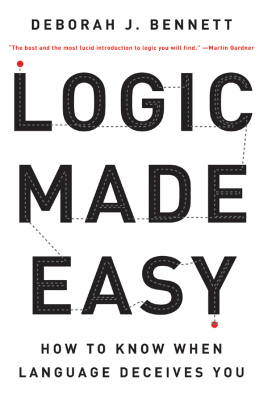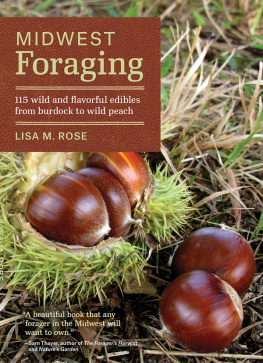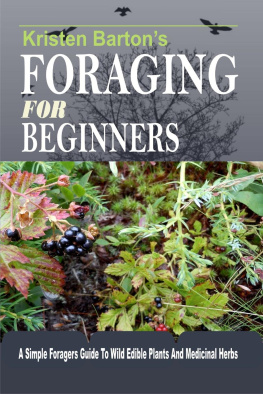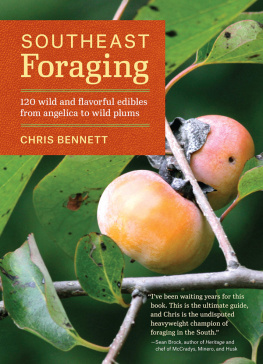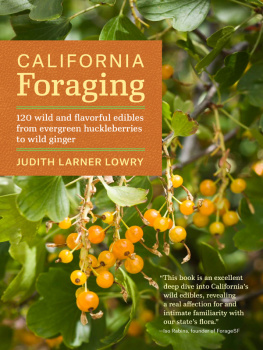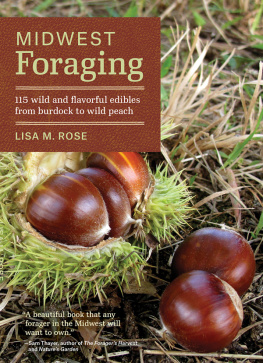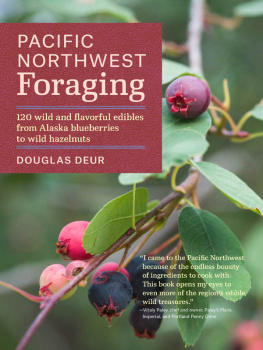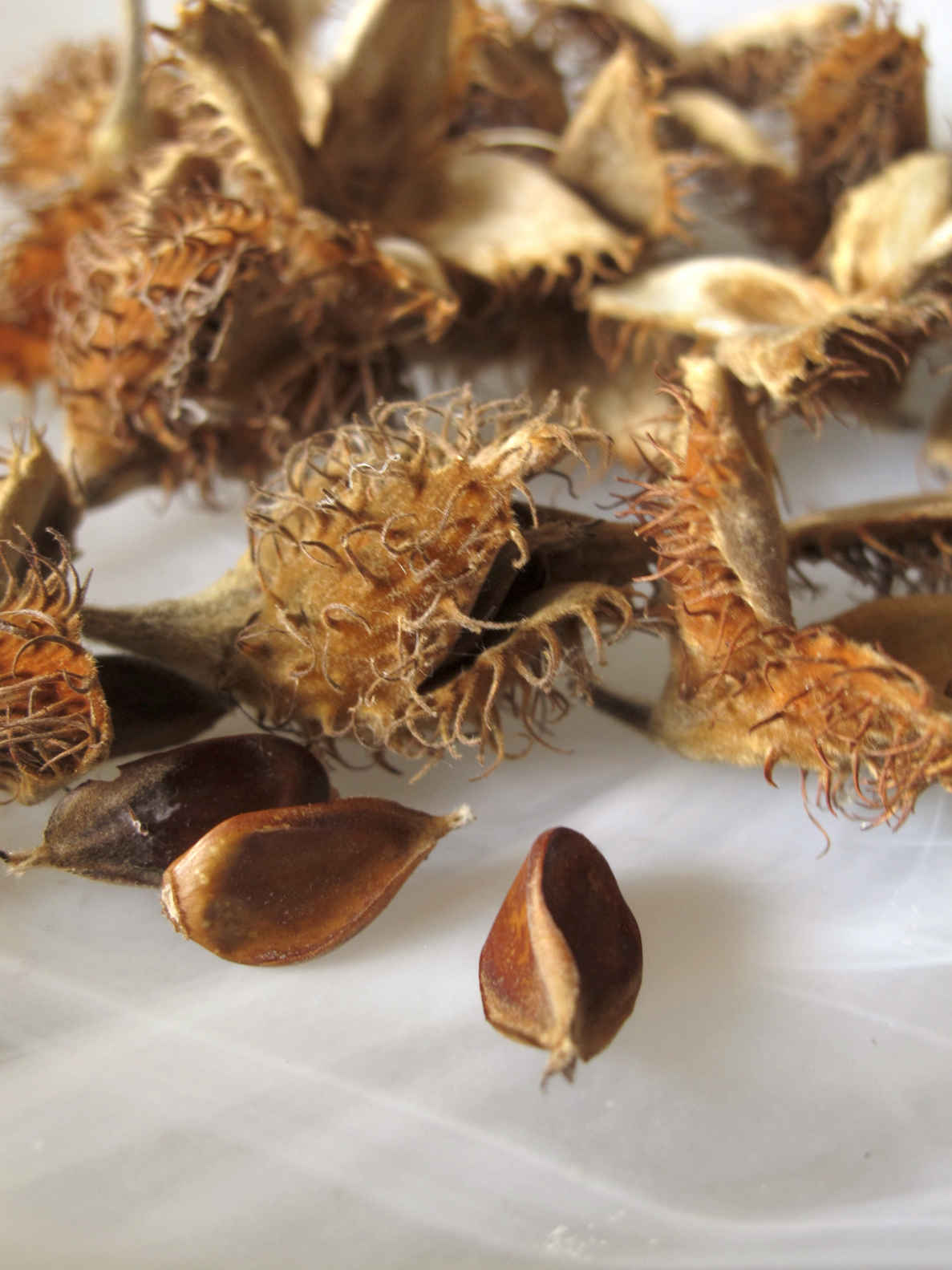
Beechnuts in the fall.
SOUTHEAST Foraging
120 wild and flavorful edibles from angelica to wild plums
CHRIS BENNETT
TIMBER PRESS
PortlandLondon
Copyright 2015 by Chris Bennett. All rights reserved.
Published in 2015 by Timber Press, Inc.
Photo credits appear on .
The information in this book is true and complete to the best of our knowledge. All recommendations are made without guarantee on the part of the author or Timber Press. The author and publisher disclaim any liability in connection with the use of this information. In particular, eating wild plants is inherently risky. Plants can be easily mistaken and individuals vary in their physiological reactions to plants that are touched or consumed.
The Haseltine Building
133 S.W. Second Avenue, Suite 450
Portland, Oregon 97204-3527
timberpress.com | 6a Lonsdale Road
London NW6 6RD
timberpress.co.uk |
Text and cover design by Benjamin Shaykin
Library of Congress Cataloging-in-Publication Data
Bennett, Chris, 1979 author.
Southeast foraging: 120 wild and flavorful edibles from angelica to wild plums/Chris Bennett.First edition.
pages cm
Includes bibliographical references and index.
ISBN 978-1-60469-691-2
1. Wild plants, EdibleSouthern States. 2. Forage plantsSouthern States. I. Title.
QK98.5.U6B45 2015
581.6'320975dc23 | 2014038439 |
To my father, Tom Bennett, who first taught me about foraging. |
Contents
Preface
Foraging in the Southeast
Foraging for wild edibles is undergoing a renaissance in the United States. Whether it is the logical extension of the farm-to-table movement or the result of decades of American reforestation, foraging is an experience no longer claimed just by hunters and campers. We are living in a fortunate moment when you might find local edible wild plants on your dinner table at an urban restaurant. You might be able to take a community foraging class taught by a local expert who lives in your neighborhood. You may even find yourself in your own backyard plucking some wild ginger for your morning tea or gathering dandelion greens for the evenings salad.
This rebirth of interest in edible wild plants is good for the landscape and for preserving our cultural heritage. Foraged foods require no packaging, spraying, or fertilizing to be at their freshest and most tasty. They need no trucking or shipping to reach your table, for this is as close to the land as you can eat. From the mountains of West Virginia and the Carolinas to the swamps of Louisiana and the coastal floodplains of Mississippi and Alabama, the Southeast is extremely rich and diverse in wild edibles. Wild plants are copious in wild lands; no logging, clearing, or plowing is required to create optimal growing conditions for these edibles. At the same time, this free food is available in all types of landscapesurban, suburban, rural. The range of different plant habitats in the Southeast is staggering: mountains, foothills, plateaus, floodplains, swamps, marshes, grasslands, forests, ridges, valleys, lawns, meadows, overgrown fields, thickets, disturbed soil, seashores, riverbanks, lakes, and bogs. This makes foraging accessible to everyone, in every part of the region and within every budget. For many folks who are eager to reconnect with heritage cooking and lifestyles, foraging also offers a direct link to the past. Those hickory nuts and that garlic mustard you might find today are the same ingredients early Native Americans and European settlers were gathering for their own meals in days long ago.
Foraged foods are good for our bellies, too. Distinctively wild flavors are adding a new dimension to American regional cuisines. No one knows this as well as chefs in the Southeast, who recently have been cooking with and seeking out traditional and foraged foods with enthusiasm. Growing up in Alabama on my familys farm gave me a strong connection to the land of my region. I did not fully realize this relationship until after I returned home from cooking in restaurants in Chicago and other big cities. Reading agrarian writers like Wendell Berry and chefs like Michel Bras gave me a strong reestablished awareness of the regions food ways. I wanted to provide and revive the almost lost knowledge of foraging for wild edibles for the restaurant scene and home kitchen.
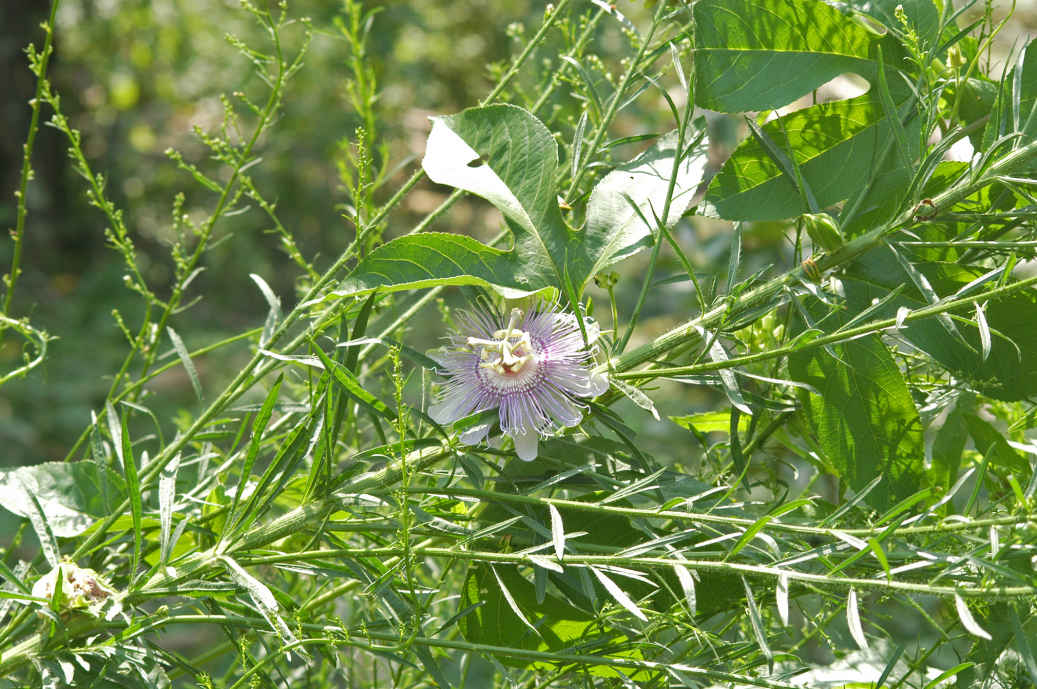
Flowers of the maypop vine give way to citrus-flavored fruit in late summer.
I supply restaurants in Birmingham, Alabama, with wild edibles throughout the year. I love walking through the back door of a restaurant carrying the first wild strawberries of the year and seeing how everyones eyes light up as the glorious sight and aroma of the berries fill the room. I also truly enjoy teaching classes on foraging to people in the area. They generally are surprised and delighted at the bounty that the Southeast has to offer. I get so much pleasure just spreading the word about all the wild foods that are around us and how much fun it is to seek them out.
Ive written this book so you can quickly and easily find what you need to know about wild edible plants in the Southeast. In the first section, I introduce you to the world of foraging, and offer detailed information on where to forage in our region, how to identify the edible plants, what equipment you might need, and the ethics of foraging. The next section lists what wild edibles are available for gathering, by season and habitat, from mountains to seashore. Then, the majority of the book presents plant profiles that are listed alphabetically. Each plant entry introduces the plants features and edible parts, includes photographs for identification, and offers tips for gathering, preparing, and preserving each edible.
So, come take a walk with me through the pine forests, coastal plains, and hilly uplands of our southeastern states and lets see what we will find.
Foraging: An Introduction
I often get asked, Why do you forage? I forage because I love how rich and diverse nature is in the South and I love food. Foraging leads you to delicious, nutritious wild foods, is sustainable, and helps you to be a more creative cook.
Unique tastes and textures of wild edibles
From the sour tartness of sumac to the citrusy, grapefruitlike aroma of Virginia pine needles, wild edible plants offer flavors and textures you cannot find in local supermarkets. That is one of the reasons that chefs seek them out. They also relish using them because they want their food to reflect the local environment.
Many weeds that you often walk by are tasty and even appear on restaurant menus and sometimes even in farmers market stalls. Pokeweed, wood sorrel, field garlic, and purslane are just a few of those.
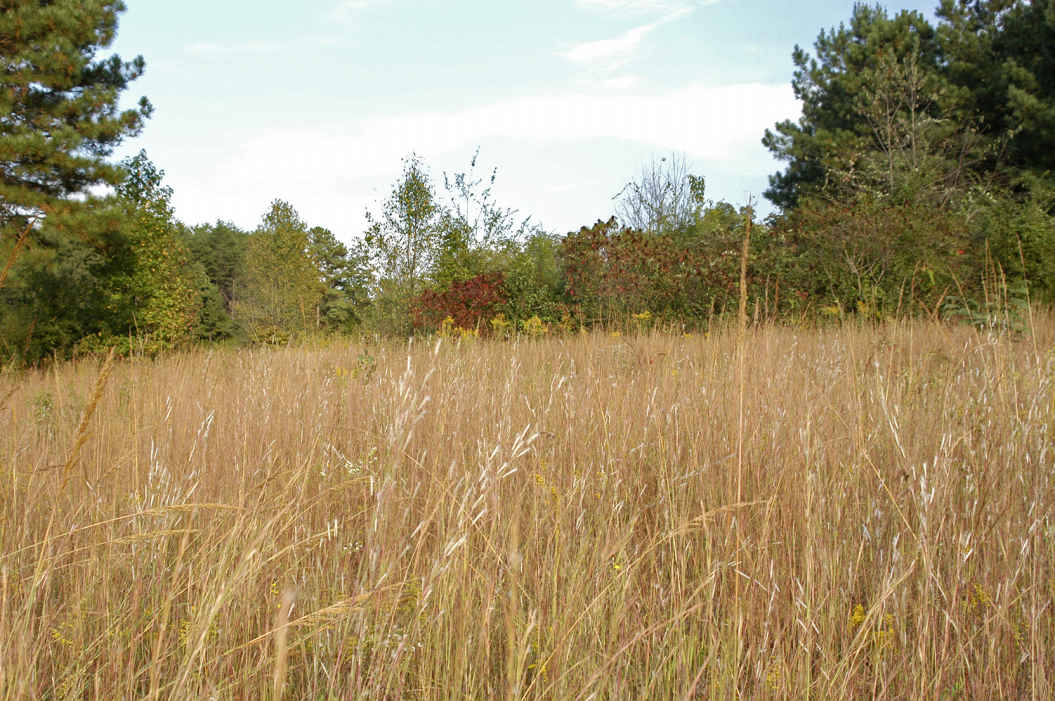
Overgrown fields are one of my favorite places to forage because of the abundance of wild edibles they harbor.
Food that money cant buy
Free food is all around us. Foraging is not just for survivalists; its also a fun way to supplement your diet.
Next page





